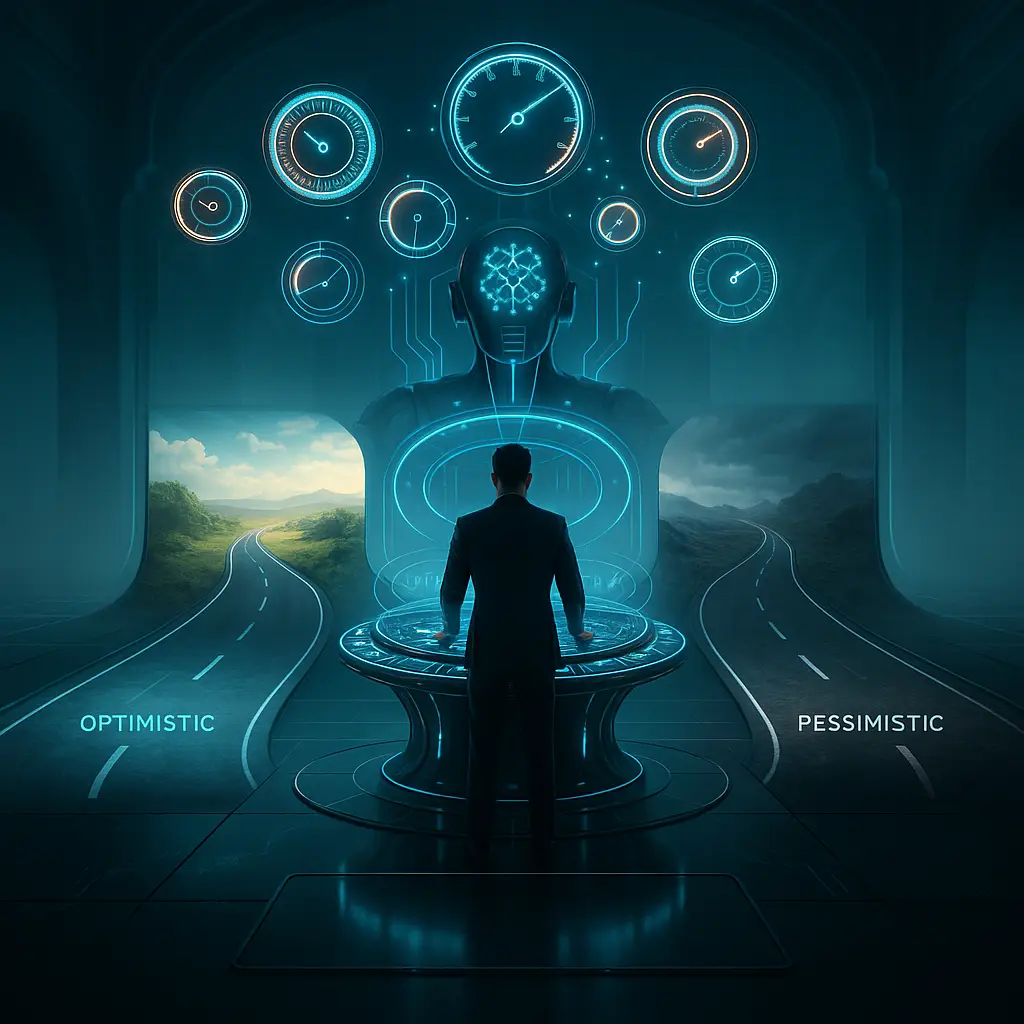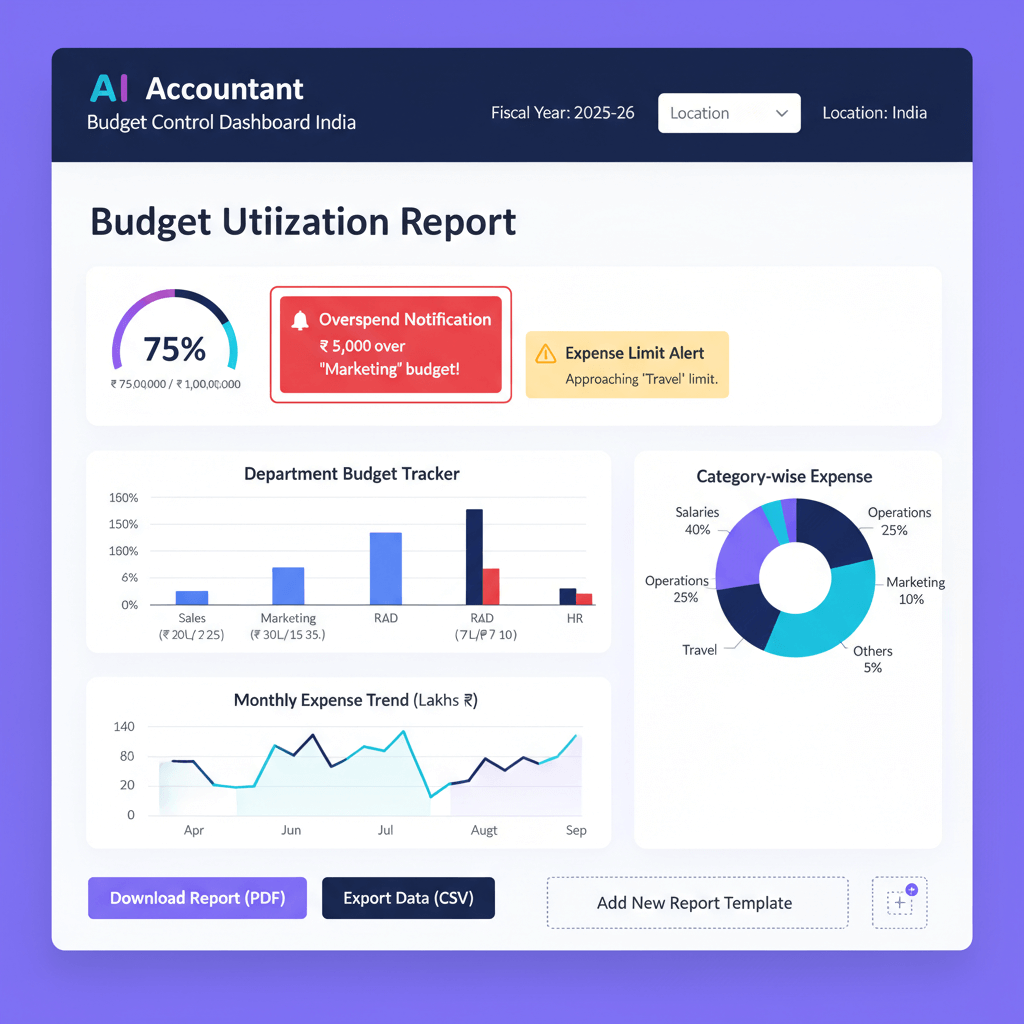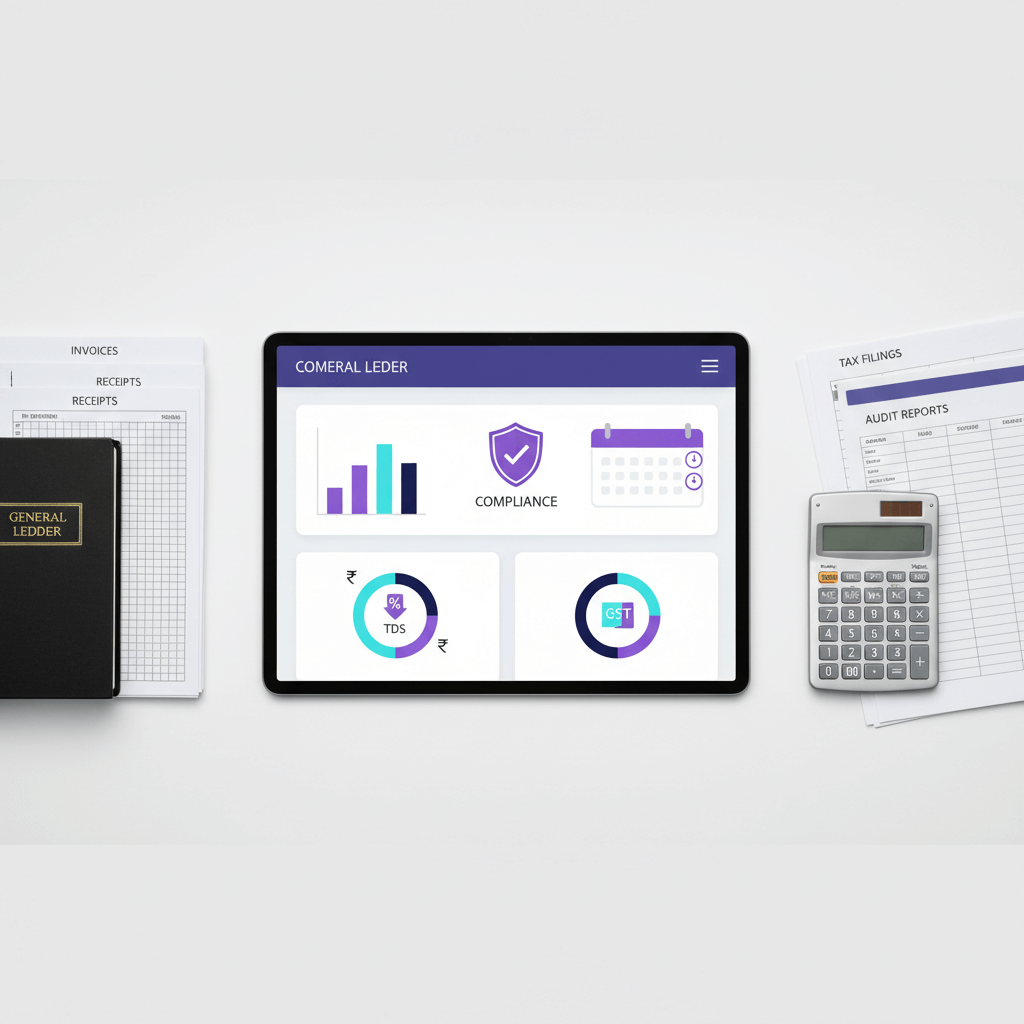Key takeaways
- Scenario planning turns accountants into strategic partners by modeling multiple financial futures.
- Modern tools like AI Accountant democratize what-if analysis.
- Budget versus actual variance analysis and scenario planning in finance provide forward-looking insights.
- Driver based planning and sensitivity analysis identify key business drivers and pressure points.
- Interactive dashboards enable real-time decision support across devices.
- Cloud-based collaboration ensures scenarios always reflect current data.
Table of contents
- What is Scenario Planning in Finance?
- Why Scenario Planning Matters for SMBs and Accountants
- Tools for Scenario Planning: From Excel to Automation
- Understanding Budget Versus Actual Variance Analysis
- Using Driver Based Planning for Financial Modeling
- Incorporating Sensitivity Analysis in Financial Planning
- Building What If Analysis Dashboards That Drive Decisions
- FAQ
What is Scenario Planning in Finance?
Scenario planning is the practice of creating multiple financial models that simulate different possible futures. Instead of predicting a single outcome, you explore several “what if” situations to prepare for various possibilities.
Think of it as your financial GPS. When traffic hits, you don’t just sit there. Your GPS calculates alternate routes. Similarly, scenario planning maps out different financial paths when business conditions change.
Traditional forecasting relies on static assumptions and linear projections, but in India’s volatile market, the future rarely follows a straight line.
Consider a textile manufacturer in Tamil Nadu. Traditional budgeting might assume 15% growth based on last year, but scenario planning would model raw material cost spikes, new GST regulations, and customer shifts to competitors. You’re not just reporting the past—you’re preparing for what comes next.
Why Scenario Planning Matters for SMBs and Accountants
India’s business environment changes rapidly. GST rate updates, monsoon impacts, festival demand swings, and currency fluctuations can render static budgets obsolete. Scenario planning empowers adaptive decision making so you anticipate crises instead of reacting to them.
For Chartered Accountants, this shift is transformational. Clients expect strategic guidance, not just compliance support. The CA who models multiple business scenarios and recommends data–backed strategies becomes indispensable.
- Anticipate cash flow challenges and vendor payment delays.
- Present clients with clear action plans for optimistic, realistic, and pessimistic scenarios.
- Position yourself as a strategic partner rather than a service provider.
While competitors scramble to explain variances, you’re already modeling solutions and moving forward.
Tools for Scenario Planning: From Excel to Automation
Traditional scenario planning lived in complex Excel spreadsheets with manual formula updates and version control challenges. Today, AI Accountant and other platforms pull live data automatically, update models in real time, and generate visual dashboards that make complex analysis instantly understandable.
What makes modern tools powerful is their financial automation and connectivity. Cloud–based solutions integrate with bank feeds, invoicing systems, and expense management tools, providing a complete picture without manual data entry.
- Live data integration from Tally and Zoho Books.
- Automated scenario ready datasets at the click of a button.
- Collaborative dashboard access for multiple users with automatic version control.
Understanding Budget Versus Actual Variance Analysis
Budget versus actual variance analysis forms the foundation of effective scenario planning. It shows where reality diverges from expectations and reveals patterns that inform future scenarios.
Modern tools automatically flag significant deviations and surface them in executive dashboards. Instead of digging through reports, exceptions highlight themselves immediately.
Variance analysis transforms from backward looking reporting to forward looking planning when you use trend identification and seasonal patterns as scenario inputs.
AI–powered variance analysis even detects correlations you might miss, such as payment delays preceding inventory buildup. These insights feed directly into scenario models, turning historical behaviors into simulated futures.
Using Driver Based Planning for Financial Modeling
Driver based planning focuses on the underlying metrics that actually drive financial outcomes. Instead of projecting revenue as a percentage growth, you model customers per day, average order value, production volume, product mix, and other operational drivers.
This approach delivers more precise scenarios and fosters deeper collaboration between finance and operations.
- Adjust individual drivers independently and see combined effects instantly.
- Isolate key operational metrics for Indian SMBs like production volumes, rejection rates, and selling prices.
- Use AI Accountant to automate the identification and modeling of individual drivers.
Driver based models make scenario discussions concrete—should we assume 500 or 600 units produced daily, and how does that affect our bottom line?
Incorporating Sensitivity Analysis in Financial Planning
Sensitivity analysis in finance tests how changes in key assumptions affect outcomes. It answers the critical question: which variables matter most for your business success?
Traditional methods required manual recalculations, but modern tools automate multi–variable sensitivity, generating tornado charts and interactive tables.
For a software services firm, losing one major client might cut revenue by 40%, while for manufacturing, raw material cost spikes could be the biggest risk.
With automated sensitivity models, you can continuously monitor evolving business conditions and provide clients with ongoing strategic guidance rather than annual snapshots.
Building What If Analysis Dashboards That Drive Decisions
Effective what if analysis dashboards go beyond numbers—they tell a story and guide actions. The best dashboards offer:
- Interactive scenario exploration for CFOs, operations managers, and board members.
- Real time data integration ensuring scenarios reflect current reality.
- Mobile accessibility and automated alerts for continuous monitoring.
- Easy export and sharing capabilities for presentations and reports.
AI Accountant exemplifies this approach by pulling live data from Tally and Zoho Books, ensuring that your what if analysis always starts with accurate current state information.
FAQ
How can I use scenario planning in finance to advise my SMB clients?
Start by identifying key drivers like cash flow timing and cost inputs. Use tools like AI Accountant to automate model creation and simulate optimistic, realistic, and pessimistic scenarios. Present clear action plans for each outcome to position yourself as a strategic advisor.
What software do Chartered Accountants use for dynamic scenario modeling?
Many CAs still use Excel, but modern platforms such as AI Accountant integrate directly with Tally and Zoho Books, offering real time scenario updates and collaborative dashboards without manual data entry.
How do I link budget versus actual variance analysis to future scenarios?
Perform automated variance analysis to detect trends and exceptions. Use historical deviation patterns as inputs for scenario planning, modeling how repeated variances could unfold under different business conditions.
Can driver based planning replace traditional bottom–up budgeting?
Yes. Driver based planning focuses on operational metrics like units produced, price per unit, and rejection rates. This approach yields more accurate forecasts and makes scenario adjustments straightforward.
What are the best practices for sensitivity analysis in financial planning?
Identify the top 5 variables that most impact your outcomes, then use automated tools to run single and multi–variable tests. Visual outputs like tornado charts help stakeholders understand which assumptions require close monitoring.
How do I ensure my what if analysis dashboards remain up to date?
Choose a cloud based tool that pulls live data from accounting systems, bank feeds, and operational databases. Configure automated refresh schedules and alert thresholds so dashboards always reflect the latest figures.
How do I present scenario outcomes to non finance teams?
Use visual dashboards with clear before and after comparisons, trend lines, and key metric summaries. Interactive sliders let stakeholders adjust assumptions and see real time results without diving into spreadsheets.
How frequently should I update scenario models for my clients?
While annual reviews are standard, it’s best to refresh scenarios monthly or whenever significant events occur, such as policy changes or market disruptions. Automated tools make frequent updates effortless.
What level of complexity is appropriate for SMB scenario planning?
Keep models focused on the most impactful drivers. Overly complex spreadsheets can lead to errors. Use automation to handle the heavy lifting and maintain transparency for key stakeholders.
How does AI Accountant enhance traditional scenario planning?
AI Accountant automates data extraction, variance analysis, driver based modeling, and sensitivity testing. It provides collaborative dashboards, real time updates, and proactive alerts, transforming scenario planning into a continuous advisory service.

-01%201.svg)



